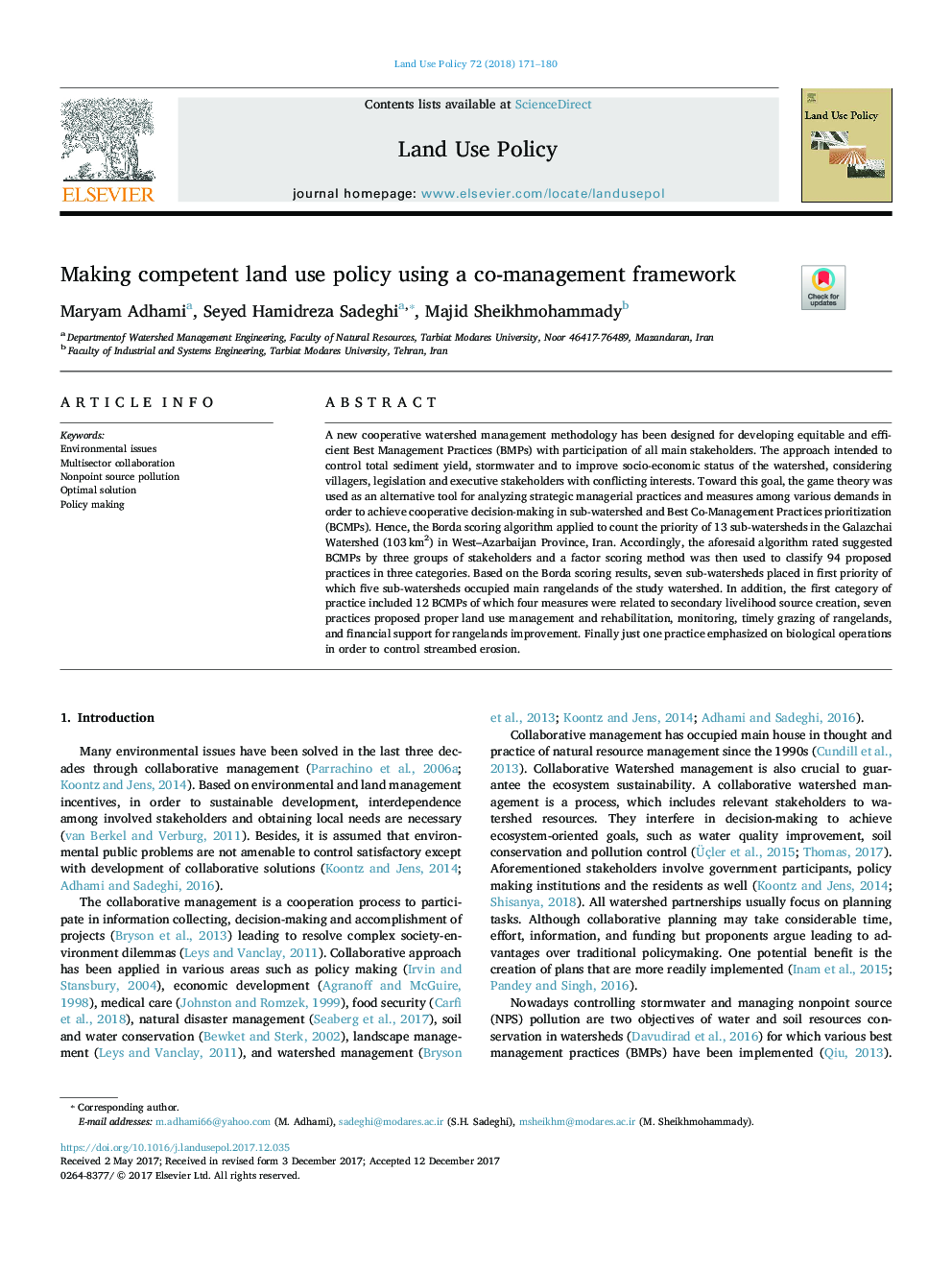| Article ID | Journal | Published Year | Pages | File Type |
|---|---|---|---|---|
| 6546580 | Land Use Policy | 2018 | 10 Pages |
Abstract
A new cooperative watershed management methodology has been designed for developing equitable and efficient Best Management Practices (BMPs) with participation of all main stakeholders. The approach intended to control total sediment yield, stormwater and to improve socio-economic status of the watershed, considering villagers, legislation and executive stakeholders with conflicting interests. Toward this goal, the game theory was used as an alternative tool for analyzing strategic managerial practices and measures among various demands in order to achieve cooperative decision-making in sub-watershed and Best Co-Management Practices prioritization (BCMPs). Hence, the Borda scoring algorithm applied to count the priority of 13 sub-watersheds in the Galazchai Watershed (103â¯km2) in West-Azarbaijan Province, Iran. Accordingly, the aforesaid algorithm rated suggested BCMPs by three groups of stakeholders and a factor scoring method was then used to classify 94 proposed practices in three categories. Based on the Borda scoring results, seven sub-watersheds placed in first priority of which five sub-watersheds occupied main rangelands of the study watershed. In addition, the first category of practice included 12 BCMPs of which four measures were related to secondary livelihood source creation, seven practices proposed proper land use management and rehabilitation, monitoring, timely grazing of rangelands, and financial support for rangelands improvement. Finally just one practice emphasized on biological operations in order to control streambed erosion.
Related Topics
Life Sciences
Agricultural and Biological Sciences
Forestry
Authors
Maryam Adhami, Seyed Hamidreza Sadeghi, Majid Sheikhmohammady,
